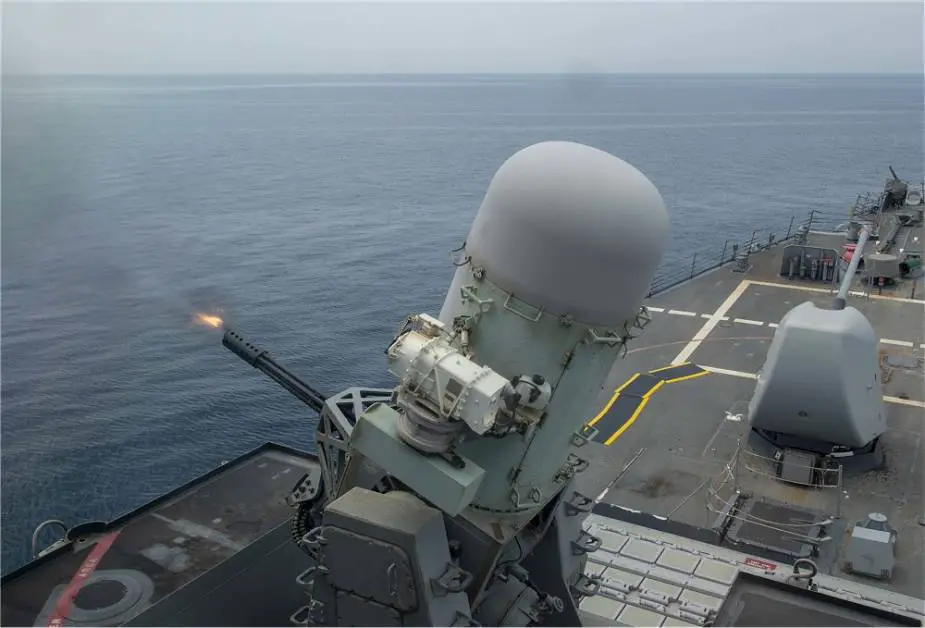The sailors of US Navy USS Paul Hamilton (DDG 60) conduct live firing exercise with Phalanx CIWS, a Close-In Weapon System that is used to protect the ship against airborne threats such as anti-ship missiles and helicopters.
Follow Navy Recognition on Google News at this link
 The Close-In Weapons System preforms a test fire during a live-fire exercise aboard the guided-missile destroyer USS Paul Hamilton (DDG 60) May 19, 2020. (Picture source U.S DoD)
The Close-In Weapons System preforms a test fire during a live-fire exercise aboard the guided-missile destroyer USS Paul Hamilton (DDG 60) May 19, 2020. (Picture source U.S DoD)
The US Navy USS Paul Hamilton (DDG 60)s deployed to the U.S. 5th Fleet area of operations in support of naval operations to ensure maritime stability and security in the Central Region, connecting the Mediterranean and Pacific through the Western Indian Ocean and three strategic choke points.
The Phalanx is a Close-In Weapon System (CIWS) developed and produced by the American company General Dynamics Corporation, Pomona Division, later a part of Raytheon. This type of weapon is used to protect warships against airborne threats such as anti-ship missiles and helicopters. It is a rapid-fire, computer-controlled, radar-guided gun that can also destroy anti-ship missiles and other close-in threats on land and at sea. This weapon system has a range from 2 to 9 km.
The gun mount of the Phalanx moves at a very high speed and with great precision. The system takes minimal inputs from the ship, making it capable of functioning despite potential damage to the ship. The only inputs required for operation are 440 V AC three-phase electric power at 60 Hz and water (for electronics cooling). For full operation, including some nonessential functions, it also has inputs for ship's true compass heading and 115 V AC for the PASS subsystem.
The U.S. Navy USS Paul Hamilton (DDG-60) is an Arleigh Burke-class destroyer in the United States Navy currently in service. Constructed at Bath Iron Works (BIW) in Bath, Maine, Paul Hamilton was commissioned in May 199, Charleston, South Carolina.With an AN/SPY-1D phased array radar system, PAUL HAMILTON incorporates significant advances in the detection capabilities of the AEGIS Weapon System, particularly in its resistance to enemy Electronic Counter Measure (ECM).
Using SPY-1D and the ship's Mark 99 Fire Control System, PAUL HAMILTON can guide its vertically launched Standard Missiles to intercept hostile aircraft and missiles at extended ranges. To provide point defense against hostile air targets, PAUL HAMILTON is equipped with the Block 1 upgrade to the Phalanx Close In Weapons System (CIWS).



